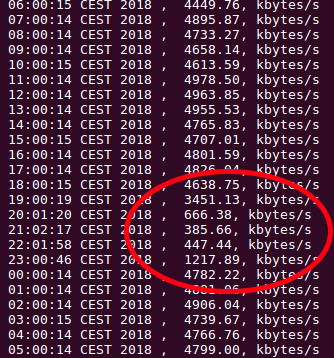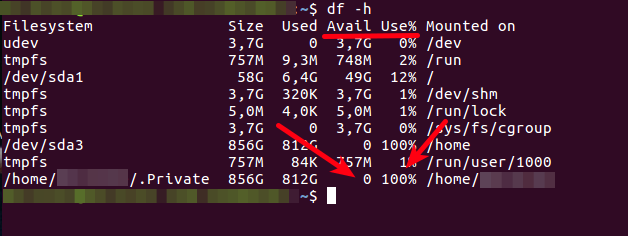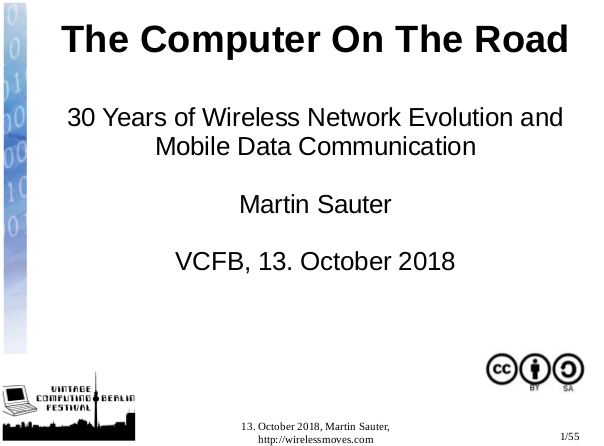The weekend is almost over and before I board the train back to Cologne, I thought I’ll do a quick post on my talk about the history of mobile networks and mobile data communication in the past 30 years at the Vintage Computer Festival Berlin this year.
Author: Martin
At the VCFB This Wekkend!
While I’m typing this I’m sitting in the train from Cologne to Berlin, on my way to this year’s Vintage Computer Festival Berlin (VCFB). It’s beautiful sunny weather, unlike last year, when an autumn storm turned my train trip into a nightmare.
Like last year, I have brought a little exhibit with me again, this time about GEOS, a graphical user interface for the masses that was very popular in the second half of the 1980s. In addition, I’ve spent the last few weeks collecting my thoughts and pictures about the evolution of wireless networks and mobile data communication in the past decades. I will present the result in a 90 minute talk tomorrow, Saturday, 12 October. The talk will be recorded and perhaps also live streamed in case you are interested. I intend to hold the talk in German but there will surely opportunities in the future to record an English version as well.
Android Opens Links With GPS Coordinates in Osmand
 Sometimes it is just a lot more convenient to do a map search on the PC rather than on the phone. Nevertheless I still want to have the result in Osmand (OpenStreetMap for Android) on my smartphone for later use, e.g. for car navigation. So my approach so far was to first search the location on the PC and once I knew where it is I would manually locate and bookmark it on the smartphone again. Far from ideal… However, I just found out a much simpler way to do this by accident:
Sometimes it is just a lot more convenient to do a map search on the PC rather than on the phone. Nevertheless I still want to have the result in Osmand (OpenStreetMap for Android) on my smartphone for later use, e.g. for car navigation. So my approach so far was to first search the location on the PC and once I knew where it is I would manually locate and bookmark it on the smartphone again. Far from ideal… However, I just found out a much simpler way to do this by accident:
Continue reading Android Opens Links With GPS Coordinates in Osmand
Backbone Bottlenecks
 After upgrading to VDSL vectoring with a 100 Mbit/s downlink and 40 Mbit/s uplink in Cologne recently, I soon figured out what to do with the additional uplink speed: Advanced synchronization with my network behind a fiber line in Paris. Equally soon I noticed that no longer is my access link the bottleneck but rather under-dimensioned backbone links. So I had to find a way to creatively route my traffic around the problem.
After upgrading to VDSL vectoring with a 100 Mbit/s downlink and 40 Mbit/s uplink in Cologne recently, I soon figured out what to do with the additional uplink speed: Advanced synchronization with my network behind a fiber line in Paris. Equally soon I noticed that no longer is my access link the bottleneck but rather under-dimensioned backbone links. So I had to find a way to creatively route my traffic around the problem.
5G TDD: Synchronization Across Networks Required?
I recently came across this paper of Huawei on 5G Spectrum matters and one paragraph in particular caught my attention:
“[…] inter-operator synchronisation and alignment of uplink/downlink transmissions (slot and frame synchronization) is […] necessary for efficient deployment of 5G NR networks in unpaired assignments.”
In other words this sentence says that network operators using adjacent spectrum have to synchronize their radio networks to avoid interference. So why is this necessary and what exactly does that mean?
Continue reading 5G TDD: Synchronization Across Networks Required?
Roaming In Monaco
 Remember the days when you traveled in Europe and had to pay high prices for voice and data roaming as soon as you crossed a border or had to buy a local SIM card for reasonably priced mobile Internet access? It seems like those days are long gone but that’s actually not the case, free roaming in the EU only came into effect last year. And even worse, there are still places on mainland Europe apart from Switzerland that are not part of the EU, where one gets a bitter reminder of how things were in the past. An interesting example is Monaco.
Remember the days when you traveled in Europe and had to pay high prices for voice and data roaming as soon as you crossed a border or had to buy a local SIM card for reasonably priced mobile Internet access? It seems like those days are long gone but that’s actually not the case, free roaming in the EU only came into effect last year. And even worse, there are still places on mainland Europe apart from Switzerland that are not part of the EU, where one gets a bitter reminder of how things were in the past. An interesting example is Monaco.
The Future of Microprocessors
Interested in the past, present and the future of microprocessors? If so, the video of Sophie Wilson talking about the ‘Future of Microprocessors’ at Juliacon is a must see! In case the name Sophie Wilson doesn’t ring any bells, have a look at what Wikipedia says about her.
Her presentation will not only tell you about the history of microprocessors but also why performance hasn’t really increased in the past years, the reasons behind this and why the price per transistor on a chip has started increasing again with further miniaturization instead of further decreasing, which has fueled Moore’s law for the past decades. And most important she will give her educated opinion on where we will go from here.
VDSL and G.Fast Coexistence
A few days ago, there’s been a great talk about G.Fast at the Local Chaos Computer Club chapter (C4, Cologne) by Stefan Förster of NetCologne. Here’s a link to the video of the talk (in German). I was particularly interested, because NetCologne recently announced that they have finished their G.fast trial (using the existing telephony copper wiring in buildings) and are about to start commercial service. This sounds like great news and I had quite a number of questions in my mind, including how G.fast can coexist with VDSL Vectoring that the the national incumbent offers in Cologne today.
Telefonica Germany Blocks Data Roaming On Ships
One thing that I think borders on modern (digital) piracy are the charges for data roaming on board of (some) ships. Cellular on-board networks are often connected via satellite and typically, 1 MB of data transfer, which is barely enough to load the front page of a web site these days, is charged in steps 1 euro per 50 kb. In other words, a single web page costs 20 euros to download. No sane being on this planet would ever want to do that so I assume that 99.9% of the revenues generated that way are from people who’s mobile automatically registered to the on-board network when it looses contact to the land based network for a while.
Continue reading Telefonica Germany Blocks Data Roaming On Ships
What Happens When a User Runs Out Of Disk Space On Ubuntu?
 Why would anyone ever need then 640k of RAM? How could one ever fill a terabyte disk? There are orders of magnitude between those questions but both limits were easily surpassed just a few years after those questions have been asked. At the moment, a user of one of the computers I administer is approaching the second limit and I am not so sure my attempts of preventive persuasion to move some data to another disk is having the desired effect. So what happens when the disk that holds the user’s directory becomes full? Will programs just freeze? Will the computer still boot? Will suspend/resume still work? Will the user still be able to logon? Will the world come to an end?
Why would anyone ever need then 640k of RAM? How could one ever fill a terabyte disk? There are orders of magnitude between those questions but both limits were easily surpassed just a few years after those questions have been asked. At the moment, a user of one of the computers I administer is approaching the second limit and I am not so sure my attempts of preventive persuasion to move some data to another disk is having the desired effect. So what happens when the disk that holds the user’s directory becomes full? Will programs just freeze? Will the computer still boot? Will suspend/resume still work? Will the user still be able to logon? Will the world come to an end?
Continue reading What Happens When a User Runs Out Of Disk Space On Ubuntu?

